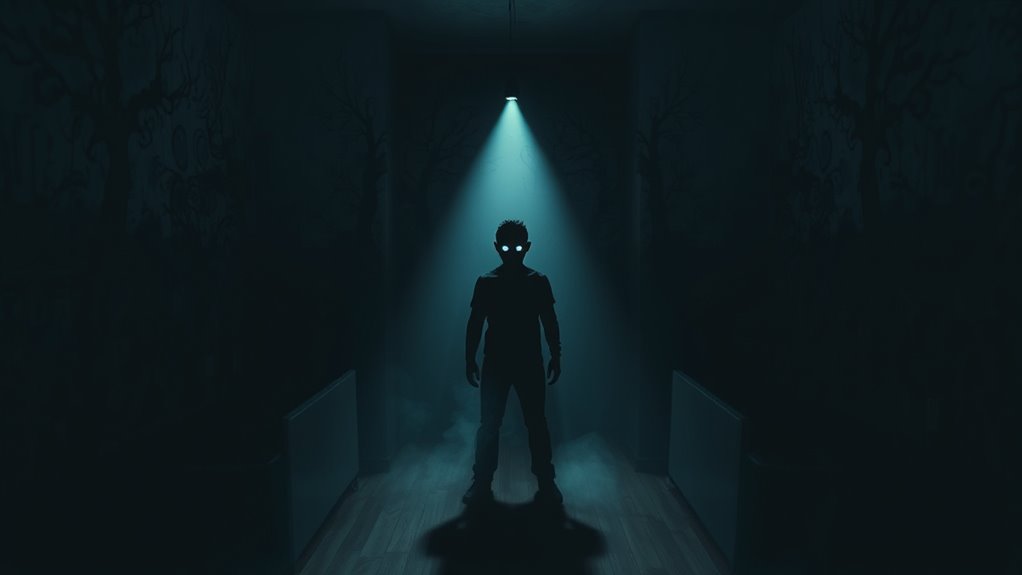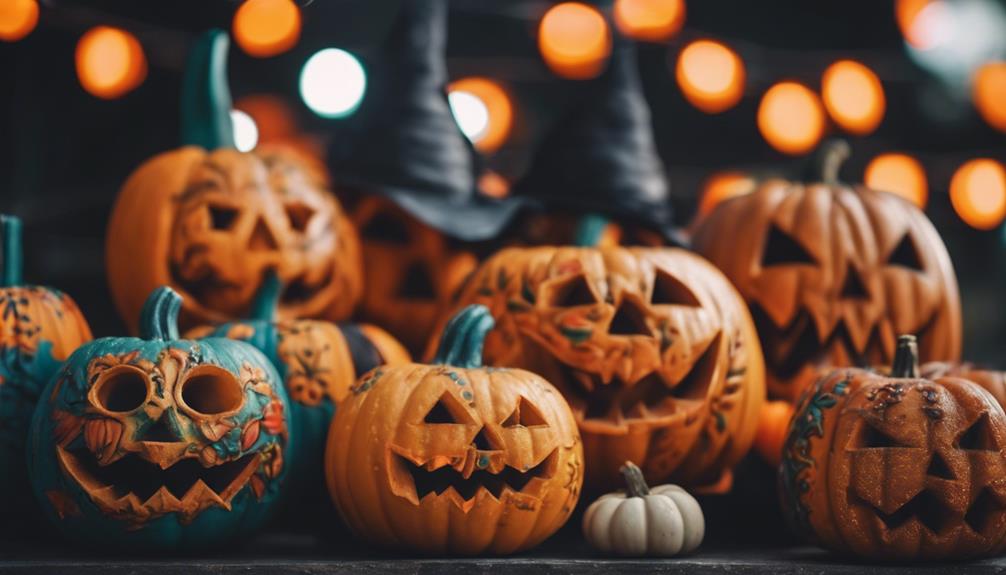You love to be scared because your brain craves the thrill of adrenaline and suspense, which horror stories deliver safely. Your mind forms associations between creepy sounds or shadows and danger, rewiring itself to seek out these rushes. Watching horror also gives you a sense of mastery over fear, making the experience exhilarating rather than harmful. Plus, sharing these moments with others strengthens your social bonds. Keep exploring to discover how your brain turns fear into fun.
Key Takeaways
- Horror triggers deep-seated fears and suspense, rewiring the brain to seek adrenaline-pumping experiences.
- The thrill of controlled fear releases pleasurable chemicals like dopamine, making horror enjoyable.
- Watching horror provides a safe way to master and explore fear without real risk.
- Shared horror experiences foster social bonds through collective emotional reactions.
- Curiosity about the unknown and desire for emotional stimulation motivate our attraction to horror.

Horror taps into deep-seated psychological triggers that evoke fear, suspense, and adrenaline. When you watch a scary movie or step into a haunted house, your brain responds in ways that are both instinctive and learned. Fear conditioning plays a key role here; over time, you’ve associated certain stimuli—like shadows, sudden noises, or eerie music—with danger. This learned association heightens your alertness and amplifies your emotional response when confronted with similar cues in fictional or real contexts. It’s a way your mind prepares you to react swiftly, even if the threat isn’t immediate or real. This process makes the experience of horror both intense and compelling, as your brain essentially rewires itself to seek out these adrenaline-pumping moments.
But beyond the conditioning, there’s a natural thrill-seeking behavior that draws you toward horror. You crave the rush of excitement that comes from facing fear in a controlled environment. Your body releases adrenaline and dopamine—chemicals responsible for arousal and pleasure—making you feel alive. This craving for stimulation explains why people often seek out terrifying stories or experiences repeatedly. It’s not about wanting to be harmed; rather, it’s about chasing that fleeting sense of exhilaration. Horror transforms fear from something threatening into a source of entertainment and even catharsis, giving you a safe space to explore your limits and confront uncomfortable emotions.
Your attraction to horror also taps into your desire for mastery and control. When you watch a horror film, you might feel vulnerable at first, but as you follow the story, you gain a sense of mastery over the fear. You understand that the danger is fictional, which allows you to experience fear without real risk. This paradoxical feeling—being scared yet safe—can be exhilarating, satisfying your innate curiosity about the unknown and the forbidden. It’s a form of psychological exploration that satisfies your need to understand fear’s boundaries.
Furthermore, horror often fosters social bonds. Watching a scary movie with friends or family creates shared emotional experiences, heightening the thrill. The collective jump scares and gasps forge a sense of community, reinforcing the idea that you’re part of something bigger than yourself. Ultimately, your love for horror stems from a complex interplay of conditioned responses, thrill-seeking instincts, and social connections—each fueling your desire to seek out fear in a way that is both exciting and manageable.
Frequently Asked Questions
How Does Horror Impact Our Brain Chemistry?
Horror impacts your brain chemistry by triggering neurotransmitter release and activating your amygdala. When you experience fear, your brain floods with adrenaline and dopamine, intensifying emotions. The amygdala processes threats, making you feel alert and alive. This combo creates an adrenaline rush, making horror enjoyable for many. You seek out these feelings because your brain craves the thrill of safe danger, creating a compelling mix of fear and excitement.
Can Fear From Horror Improve Mental Resilience?
You might find that experiencing fear from horror can actually boost your mental resilience. When you face scary situations in controlled environments, your body learns to manage stress better through meditative relaxation techniques. This exposure can reduce overall stress, helping you stay calmer in real-life challenges. So, embracing horror wisely could strengthen your ability to handle anxiety, making you more resilient and better prepared for life’s uncertainties.
Why Do Some People Seek Out Extreme Horror Experiences?
You seek out extreme horror experiences because thrill-seeking fuels your desire for adrenaline rushes, giving you a sense of excitement and challenge. These intense moments activate your nervous system, providing a temporary escape from routine and everyday stress. By confronting fears in controlled environments, you satisfy your craving for adventure and push your boundaries, making the experience both exhilarating and empowering.
How Does Cultural Background Influence Horror Preferences?
Imagine you grow up immersed in cultural storytelling that highlights societal taboos, shaping your horror preferences. Your background influences what scares you, whether it’s supernatural legends from your community or psychological fears rooted in cultural beliefs. For instance, someone from a society with strong mythologies may prefer supernatural horror, while others focus on real-world fears. Your cultural context molds your taste, making horror experiences deeply personal and meaningful.
Are Children Affected Differently by Horror Content Than Adults?
You might notice that children are affected differently by horror content than adults because their child development stage impacts emotional regulation. Kids often react more intensely, experiencing stronger fear responses, as their brains are still learning to manage emotions. As they grow, they develop better emotional regulation skills, helping them process scary stories more calmly. So, understanding these differences helps you gauge what horror content is suitable for various ages.
Conclusion
You crave the thrill of fear, the rush of adrenaline, and the thrill of the unknown. You seek the darkness to feel alive, the terror to remind you you’re human, and the scare to break the routine. You love to be scared because it awakens your senses, challenges your limits, and connects you to something primal. In embracing fear, you find excitement, release, and a deeper understanding of what it means to truly feel alive.










